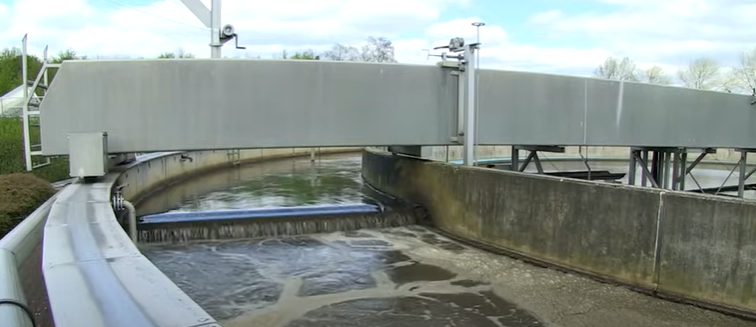Spent GAC Disposal
Comprehensive Guide to Spent GAC Disposal: Understanding the Current Landscape and Compliance
Introduction
As water treatment facilities increasingly rely on granular activated carbon (GAC) for contaminant removal, the management and disposal of spent GAC have emerged as critical aspects of operational efficiency and environmental compliance. Spent GAC, saturated with adsorbed pollutants, poses unique challenges related to disposal methods, regulatory compliance, and potential environmental impacts. For plant operators, municipal directors, and design engineers alike, understanding the implications of spent GAC disposal is imperative to meet the evolving landscape of regulations and technological advancements by 2025.
Recent industry analysis indicates that approximately 30% of water treatment facilities using GAC are currently grappling with compliance issues tied to spent GAC disposal, underscoring the urgency of addressing these challenges. Furthermore, as the U.S. Environmental Protection Agency (EPA) tightens regulations around waste management and treatment processes, the clarity around safe, compliant disposal methods becomes all the more vital.
In this article, we will dive deep into the subject of spent GAC disposal, outlining current best practices, regulatory frameworks, and innovative disposal technologies while providing actionable insights for industry professionals.
Understanding Spent GAC
What is Granular Activated Carbon?
Granular activated carbon (GAC) is a highly porous material used widely in water treatment processes to adsorb a range of organic and inorganic pollutants. Its efficacy in removing taste and odor compounds, volatile organic compounds (VOCs), and other contaminants makes it a staple in municipal water treatment facilities.
What Constitutes Spent GAC?
Spent GAC refers to carbon that has reached its adsorption capacity and is no longer effective in removing contaminants from water. Depending on the nature of the contaminants adsorbed, spent GAC may contain hazardous materials, making its disposal a significant concern.
Regulatory Landscape in 2025
The disposal of spent GAC falls under several regulatory frameworks, notably the Resource Conservation and Recovery Act (RCRA), which governs hazardous waste management in the United States. Environmental compliance is further complicated by state-specific regulations that dictate how spent GAC should be handled, transported, and disposed of.
According to the most recent EPA guidance, facilities must:
- Characterize Waste: Determine whether spent GAC stands as hazardous based on leachate testing.
- Follow Manifest Requirements: Utilize the waste manifest system for the tracking of hazardous waste.
- Conform to Disposal Standards: Adhere to disposal methods that comply with federal and state regulations.
Challenges in Spent GAC Disposal
Environmental Implications
The environmental ramifications of improper spent GAC disposal can be severe. Non-compliance can lead to groundwater contamination, air pollution, and violations of environmental laws, resulting in hefty fines and reputational damage.
Financial Burden
Disposal costs can accumulate rapidly. Landfilling, incineration, and advanced treatment technologies come with varying costs that depend on the volume and hazardous nature of the spent GAC. Industry data indicates that disposal costs can range from $200 to $400 per ton.
Public Perception and Compliance Risk
Failure to manage spent GAC responsibly can lead to public trust issues for municipalities, along with potential legal consequences. Achieving transparency and adherence to regulations not only safeguards public health but also fosters community trust.
Best Practices in Spent GAC Disposal
1. Characterization of Spent GAC
Prior to disposal, the spent GAC should undergo thorough characterization, which includes:
- Leachate Testing: To ascertain whether the material is regarded as hazardous waste.
- Contaminant Profiles: Identifying specific contaminants to guide disposal choices.
2. Adoption of Waste Minimization Strategies
Reducing the frequency of GAC replacement can significantly mitigate disposal challenges. Implementing innovative technologies such as:
- GAC Regeneration: Rejuvenating activated carbon through thermal treatment.
- Pre-treatment Processes: Enhancing the efficiency of adsorption processes to prolong GAC lifespan.
3. Selection of Appropriate Disposal Methods
Landfilling
While commonly used, landfilling of spent GAC must comply with stringent leachate infiltration standards. The carbon should not contain contaminants that exceed permissible disposal limits.
Incineration
Advances in incineration technology enable safely combusting spent GAC with a controlled ash output that meets regulatory standards. However, the potential release of contaminants during the process requires sophisticated pollution control systems.
Reuse and Recycling
Emerging technologies offer innovative alternatives, such as:
- Use in Construction: Repurposing spent GAC in construction materials.
- Energy Recovery: Utilizing spent GAC in energy production processes as a renewable resource.
4. Documentation and Compliance
Maintain thorough records of the characterization, disposal method employed, and transportation documentation to ensure adherence to regulatory requirements. Utilize a waste tracking system to monitor the flow of spent GAC from the point of generation to disposal.
Innovative Technologies in Spent GAC Management
Advanced Regeneration Techniques
Recent advancements in regeneration technologies have shown promising results. Processes such as:
- Microwave Regeneration: A method that uses microwave energy to restore the adsorptive capacity of spent GAC effectively with minimal energy input.
- Chemical Regeneration: Utilizing acidic or alkaline solutions to remove contaminants.
Automated Systems
Emerging automation technologies streamline the management processes of spent GAC. Automated monitoring systems for evaluating GAC effectiveness and scheduling replacements can minimize human error and optimize GAC lifecycle management.
Environmental Monitoring
Enhanced environmental monitoring tools can provide immediate feedback on contamination levels, allowing facilities to respond more quickly to potential compliance issues arising from improperly managed spent GAC.
Conclusion
The proper management and disposal of spent GAC are paramount for water treatment facilities in meeting regulatory standards, ensuring environmental safety, and maintaining public trust. As the landscape continues to evolve in 2025, it is imperative for industry professionals to stay informed about developments in disposal technologies and regulatory requirements.
By adopting best practices in characterization, disposal method selection, and utilizing innovative technologies, municipalities can mitigate risks associated with spent GAC disposal while contributing to sustainable water treatment solutions. Understanding the complexities of spent GAC disposal will not only ensure compliance but also enhance the operational efficiency of water treatment facilities, fostering a cleaner, healthier environment for communities.

